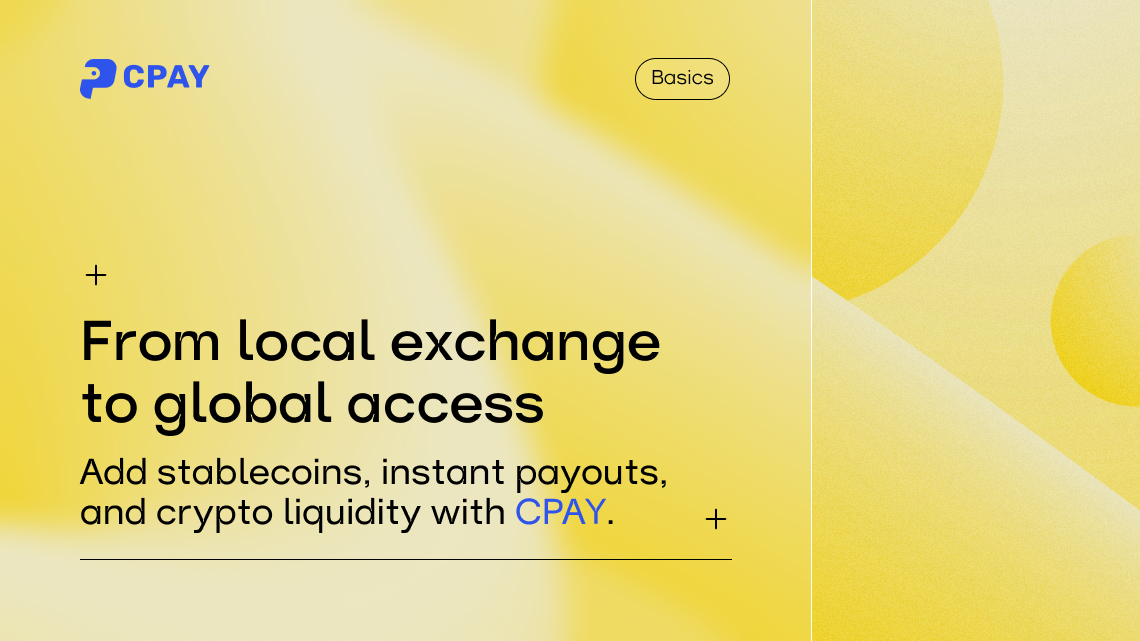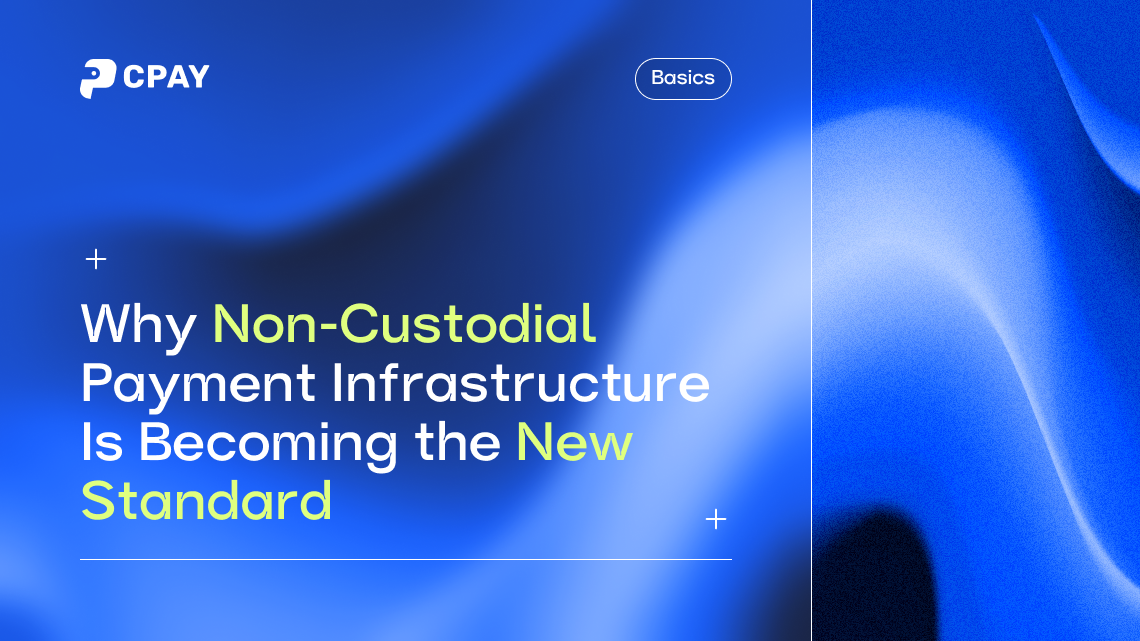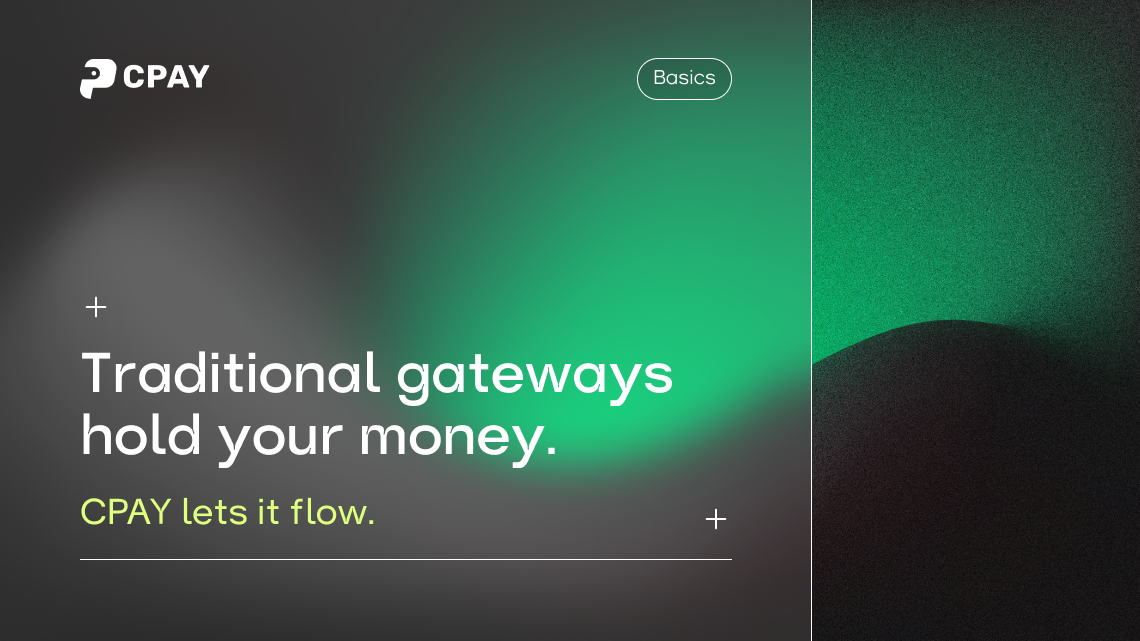Exchange platforms that let users buy, sell, or swap crypto face a growing structural challenge: payments.
While demand for instant crypto purchases and stablecoin settlements continues to rise, most operators still depend on outdated banking rails — slow, limited, and expensive.
To stay competitive, they need infrastructure that connects fiat and crypto flows seamlessly, operating 24/7 with full compliance.
The market shift
Over the past two years, exchange platforms and OTC desks have evolved from simple currency converters into full-scale payment networks.
Users no longer view stablecoins like USDT or USDC as speculative assets — they treat them as digital money for real transactions.
A freelancer in Europe wants to receive USDT in seconds, a merchant in Asia needs to settle invoices instantly, and a remittance app in Latin America wants to reduce cross-border fees.
Traditional banking systems cannot meet these expectations, limited by time zones, settlement delays, and costly intermediaries.
As a result, exchange platforms are now expanding beyond liquidity provision toward transaction infrastructure — providing direct access to crypto payments, stablecoin transfers, and instant settlements.
Core components of modern infrastructure
To handle this shift, exchanges need more than a wallet — they require a complete, modular system that integrates payments, custody, and compliance.
Wallet engine. Multi-chain support for BTC, ETH, and stablecoins such as USDT, USDC, or EURC across TRON, Ethereum, and BNB Chain.
Payment API. Unified backend that processes deposits, withdrawals, swaps, and settlements across fiat and crypto rails.
On/off-ramp module. Bridges between banks, PSPs, and blockchain liquidity, enabling instant crypto-fiat conversion.
Settlement layer. Automates liquidity rebalancing, batch payouts, and network fee optimization.
Compliance tools. Integrated KYC/AML and transaction monitoring to satisfy global licensing requirements.
Together, these components transform an exchange into a hybrid financial platform capable of serving traders, businesses, and end-users globally.
Why stablecoins drive the model
Stablecoins have become the operational backbone of modern exchanges.
In 2025, more than 70% of all crypto transfers and payments involved stablecoins as the settlement asset.
They provide price stability, fast transaction finality, and access to liquidity across multiple chains.
For exchange operators, stablecoins offer several advantages:
- predictable transaction costs and faster settlement times;
- lower reliance on traditional banking partners;
- broader global reach for clients in regions with limited fiat access.
With networks like TRON and Base offering low fees and near-instant transfers, stablecoins now rival traditional remittance systems in both speed and cost-efficiency.
Build or integrate
Developing a crypto payment infrastructure in-house can take up to a year, requiring blockchain developers, security audits, and liquidity partnerships.
For most platforms, integration of ready-made infrastructure is a more efficient path — enabling rapid deployment without compromising reliability or compliance.
A well-designed solution provides wallets, APIs, and settlement tools that connect directly to existing operations — letting exchange teams focus on business growth instead of backend maintenance.
The new standard
The boundaries between exchanges, wallets, and payment gateways are fading.
Tomorrow’s successful platforms will merge all three — offering users an environment where they can trade, store, and transfer value instantly.
Ready-made infrastructures such as CPAY enable this transition by providing modular crypto payment systems, wallet APIs, and settlement engines that connect exchanges to global liquidity.
It’s not just about adding a feature — it’s about adopting a new financial architecture where crypto becomes the default payment layer.








